Watch Out! 40 Warning Signs Nature Helpfully Gives Us Before Catastrophe Strikes
The world is a dangerous place. And we’re not just talking about the occasional unsociable person or dangerous animal—we mean all the dangers of nature. Nature is unpredictable, and it’s easy to get caught off guard if you’re not in the know. Whether you’re in the forest with your family or hiking solo, nothing can prepare you to take on nature’s wrath when she’s angry.
Thankfully, Mother Nature will give us plenty of warning signs to let us know something isn’t right before she goes off. From strange animal behavior to color changes in the environment, here are 40 signs of danger to watch out for. Keep these in mind, and you might have a chance to stay safe no matter what comes your way.
1. If A Volcano Is Shaking, Swelling, And Releasing Gas, You’re About To See An Eruption
The fate of ancient Pompeii in Southern Italy shows us what kind of damage volcanoes can do. It can seem like they explode out of nowhere, but there’s one easy way to tell if a volcano is about to erupt.
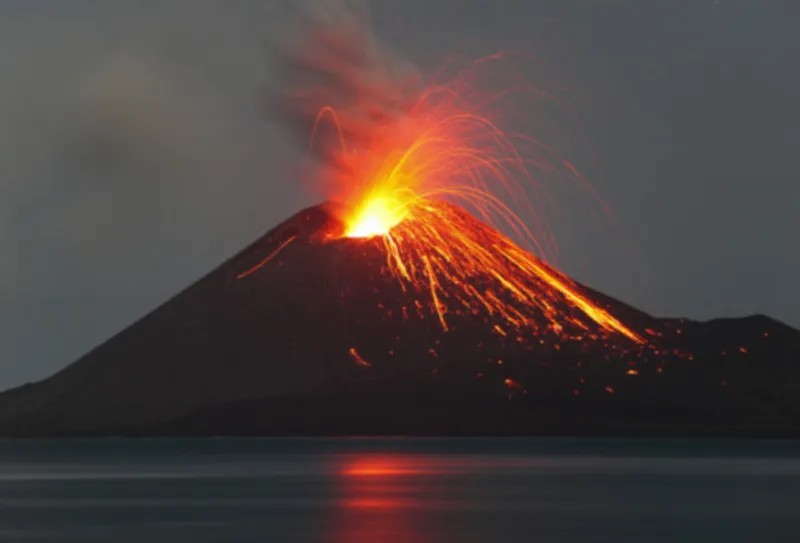
Getty Images
Before a volcano begins to erupt, the ground will shake and rumble—the volcano itself will begin to swell and release gasses. However, by the time you notice this, it might be too late for you. Luckily, there are people who specialize in monitoring volcanic activity in the world. They can immediately see the warning signs from the gas released before an eruption using advanced technology.
2. If Your Dog Points Toward A Body Part—You Should Probably Call Your Doctor
Dogs are exceptionally intelligent. They can understand hundreds of common words and commands, and unless there are leftovers on the table, they’re pretty good at reading the room. But if your dog seems to be paying more attention to one part of your body, you should probably get it checked out. Why? Dogs have an extreme sense of smell.

Getty Images photo by Deborah Pendell
It’s thought that dogs can use their sense of smell to identify cancerous growths. Researchers proved that they could distinguish between the urine of patients with and without cancer. Your dog’s unusual sniffing behavior towards you might signify health issues that need medical attention. Don’t brush him off—he might be trying to save your life. Good boy!
3. Stay Away From Brightly Colored Water
If you find yourself in Yellowstone National Park and see one of the park’s many colorful hot springs, you’ll probably want to jump right in. Take our advice—don’t. Unlike hot tubs, which are usually heated to a temperature of 105 degrees or less, these colorful pools are usually heated to well over 200 degrees Fahrenheit.

Getty Images
Some types of bacteria thrive in geothermal pools. It produces all kinds of colors; orange, green or yellow. Bacteria also makes hot springs hazardous; some become more contagious at high temperatures. Signs are posted at Yellowstone National Park to help you figure out which ones are which. Just make sure to pay attention to avoid being scalded by boiling water.
4. There’s A Way To Escape Quicksand
Quicksand is a deadly mixture of sand, clay, and water that can be found in shallow bodies of water. It comprises small clay particles packed together, and when someone steps on it, the clay melts, trapping the rest of the person’s body. Quicksand is not always dangerous, but it can be life-threatening when tides are high.
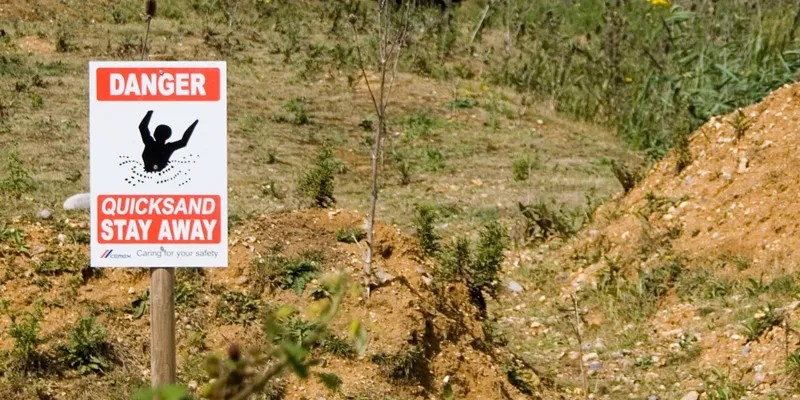
Getty Images
Rising to the surface of quicksand is possible if you get into a horizontal position. However, if the quicksand contains a large number of bubbles, then your survival depends on your movements. The more you move, the more you drown.
5. If You Are Stung By A Bee Near A Hive, Run For Cover
Bees are essential to our ecosystem, and sadly, they’re already dying off. Without them, the food chain might be snapped in two, causing all kinds of climate trouble. With that alone, it would be foolish to kill a bee. But even so, some consider them pests. Bees are attracted to humans because we often go around carrying sweet things or because we might be wearing bright colors.

Getty Images
Bees usually avoid humans unless they feel threatened. Once they smell a dead fellow bee, it emits a pheromone that prompts other bees to attack the intruder. Honey bees will attack you relentlessly if this happens. So if a bee stings you, get away from the hive as soon as you can.
6. Dead Fish Onshore? Stay Out Of The Water
Water is probably contaminated if there are dead fish or aquatic animals onshore, or worse, it could be toxic. Water becomes toxic when harmful algae take over the water, creating what looks like a “red tide.”
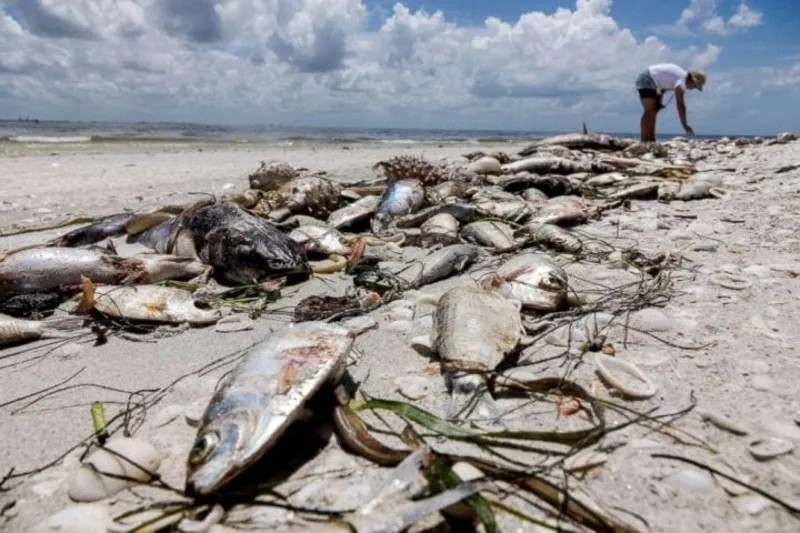
One type of algae to cause a red tide is known as Karenia Brevis. If you come into contact with it, you’ll likely experience respiratory problems such as coughing. Cleansing your skin with fresh water will remove these toxins.
7. When Animals Start Running Towards You Instead Of Avoiding You, It Means That A Wildfire Just Broke Out
When a strong forest fire occurs, wildlife will flee and won’t bother trying to get out of your way. You will see birds flying in flocks and horses running away fast. Some water-bound animals will dig a little hole in the mud under the water to protect themselves.
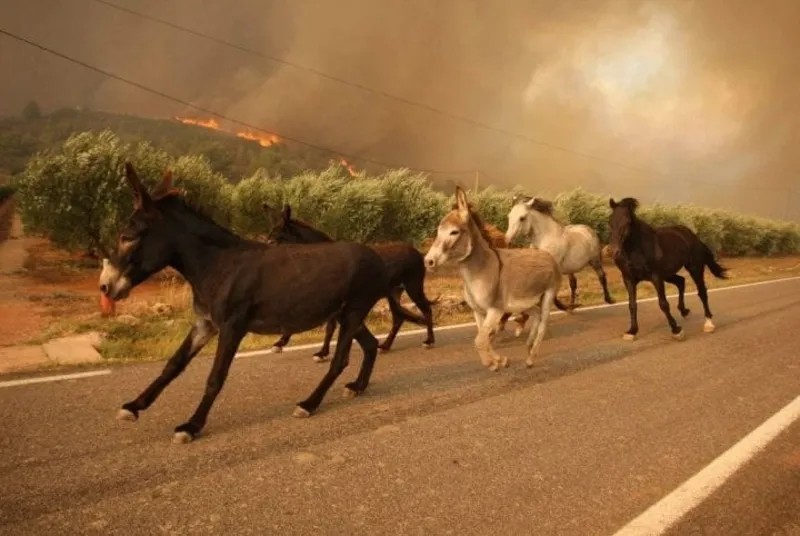
You might mistake the behavior of these animals for hunting or migration, but this is not the case. They are trying to escape from a fire by whatever means they can. While most animals have managed to escape wildfires, not all of them are successful. Poor things!
8. If You See A Band In The Sky, Head To The Basement
Experts say that when you see a swirl of clouds circling overhead, worst-case scenario—you’re looking at a large storm or even a tornado, in which case—take cover. Streaks of clouds that form parallel to the storm’s direction are called inflow bands.
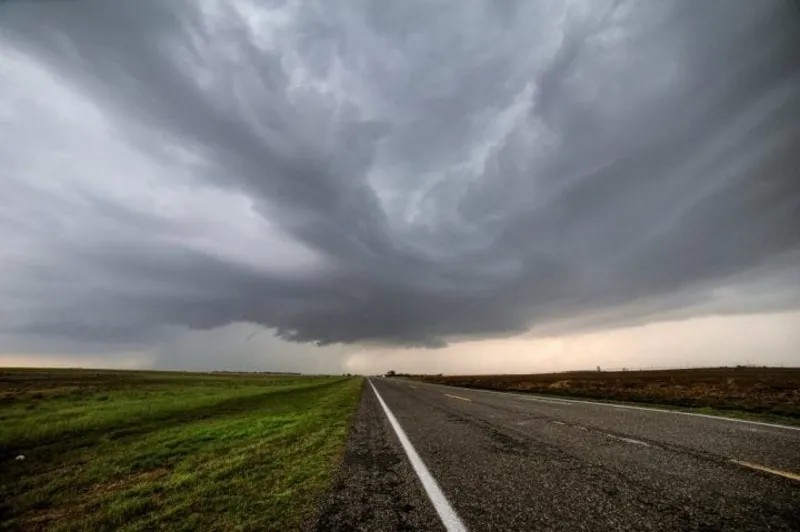
Storms with inflow bands generally move to the southeast or south of the storm and are usually low in the sky. As fascinating as they may be to watch, now is the time to get yourself and your loved ones in a place of safety such as the basement.
9. When The Sky Is Green, Watch Out For Bad Weather
Do you know what it means when the sky turns green? There might be a large storm cloud looming on the horizon. The green color in the sky is caused by the sun’s red light being mixed with the blue light of a thunderstorm. It’s a sign that a thunderstorm is on its way.
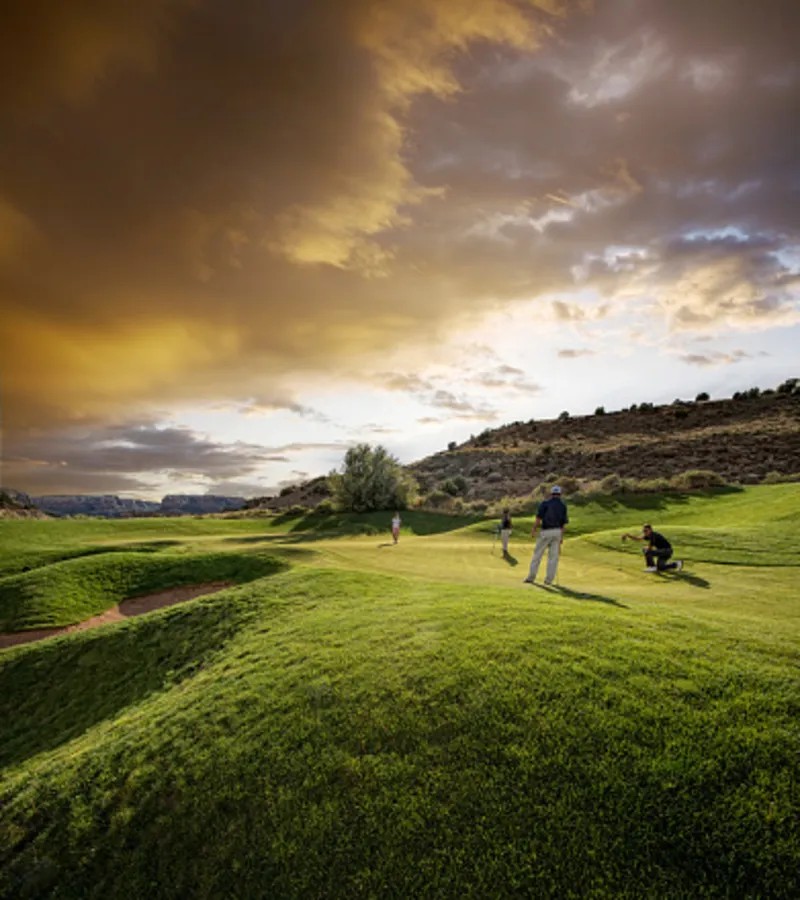
Getty Images
You don’t want to be in the open when the storm hits, especially if it turns into something nastier. If you’re in the path of a tornado, get to a basement as soon as you can. As the frequency of big storms is increasing nowadays, you might want to keep an eye on the sky.
10. Brightly Colored Animals Are Often Venomous Or Otherwise Harmful
Nature is full of vivid colors. You might be led to believe that there is something benign behind these color schemes. They might be a defense mechanism to help an animal blend into its background or to help it hide from predators. However, color on some animals is actually a warning to others that they are harmful or venomous.

Getty Images
One example would be the monarch butterfly, which has bright orange wings and patterns all over its body. A bird might mistake it for just another bug and eat it, but doing so will make the bird extremely sick. Another example is the coral snake. You might mistake it for the non-venomous “king snake,” but a few bites from a coral snake can end your life.
11. If The Water Smells Bad Or Is Green, Don’t Go In It
Green water doesn’t look appealing, does it? You’d probably never drink water that looks green. It isn’t always poisonous, but some types of algae living there will form an algal bloom, which can be harmful to both people and animals. Needless to say, these blooms are not good for any type of life.
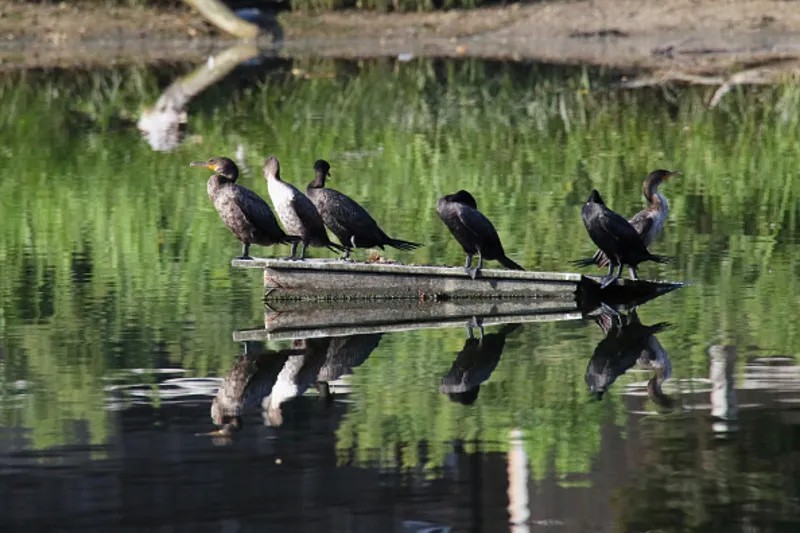
Getty Images
Not only does it change the water’s color, but it also releases toxic chemicals that even treatment plants can’t remove. In addition, animals and humans become sick from exposure to the toxic byproducts released from an algal bloom. You don’t want this stuff in your backyard!
12. When Ice On A Lake Is White Or Gray, Don’t Walk (Or Drive) On It
As the temperature drops and snow begins to fall, lakes begin to freeze. And while it may be fun to go out there with the kids to enjoy some time together skating, walking, or maybe even fishing—when it comes to ice safety, it’s still important to keep a cool head.
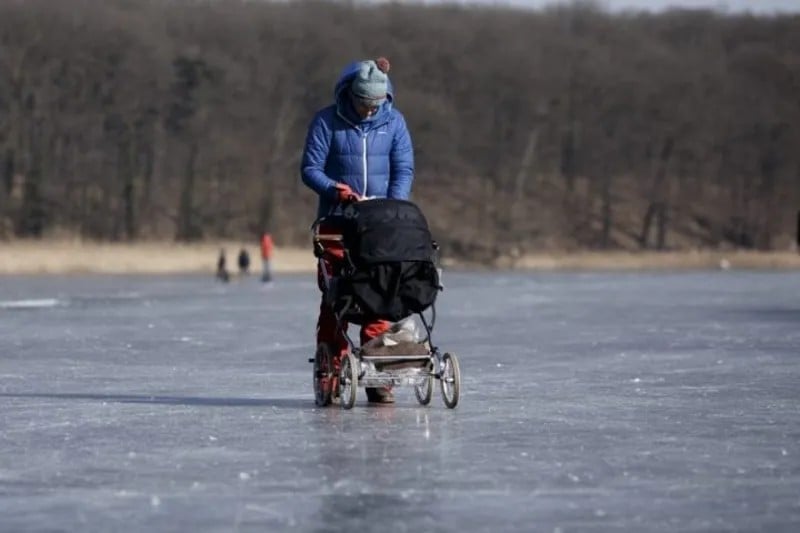
If there’s ice on a lake, it’s best to stay off of it until you can determine whether or not it’s safe. You can check how safe the ice is by looking at it. If it’s a blue, clear color, it’s probably good to go. If it’s white or gray, it’s not safe.
13. Never Go Inside A Beachside Cave During A Full Or New Moon
No matter how romantic or tempting, don’t go in a beachside cave if you don’t have the right equipment, don’t go without a group, and never go in there during high tide. The cave water levels will eventually rise too much, blocking your exit.
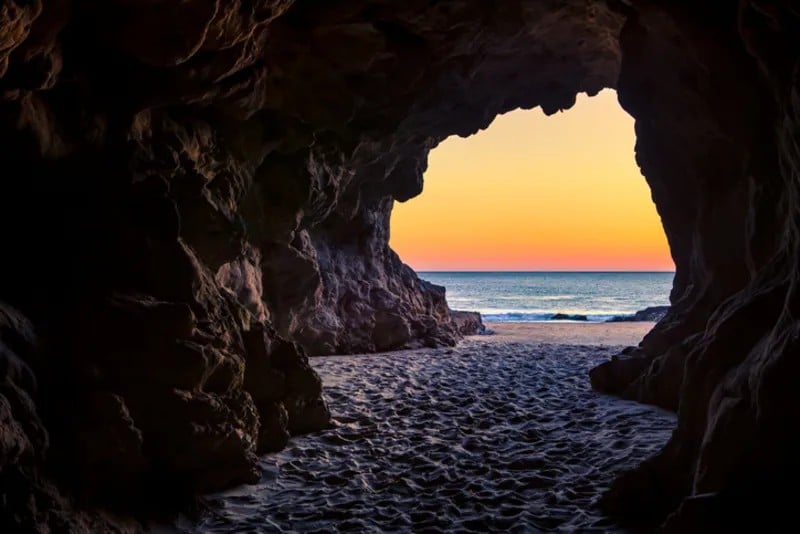
Getty Images
You might not realize that during a full and new moon, tides go a lot higher. If you don’t know the elemental facts about how the moon affects tides, it would be best not to venture into these caves, especially if you’re walking through knee-deep water before the tide changes.
14. A Tree With Deep Cracks Or Missing Bark Might Be In Danger Of Falling
Timber! Did you know getting clubbed by a falling tree can really hurt? There are plenty of silent warnings that a tree can give us before it falls. Missing bark or cracks in the bark are just two signs. Also, look at the trunk.
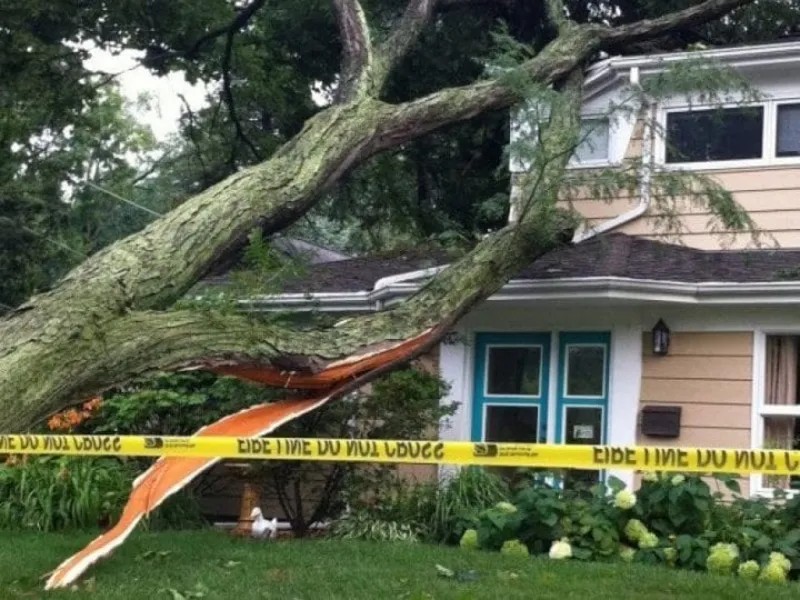
If you notice a hole in the trunk, it can also indicate that something is wrong with the tree and that it’s dying. Dead branches are another sign of a sick or dying tree. Don’t try to deal with a rotten, falling tree yourself. Call the experts and save yourself an accident.
15. When A Skunk Raises Its Tail And Stamps Its Feet...
Back away. Skunks may be cute, but their spray is not. In fact, it is one of the most foul-smelling substances known to humanity. While the stinky stuff is pretty painful, thankfully, it’s not really life-threatening. They wander around more often during their mating season, so be on the lookout. Or don’t. We’re telling you to stay away.
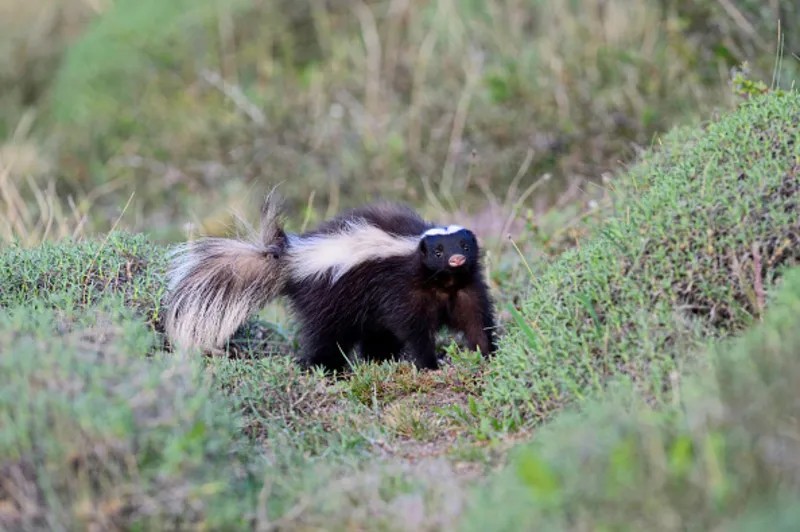
Getty Images
Skunks will warn you before spraying by standing tall on their hind legs and fluffing their fur. They will stamp their feet and twitch their tails like rattlesnakes just before spraying. If you see a skunk showing these signs, you should back away slowly while keeping your eyes on it.
16. Avoid Eating Red Berries That You Find In The Wild
It’s common knowledge that berries from the wild should not be eaten unless you are sure they’re harmless. Growing on trees, shrubs, and other plants, there are many kinds of berries in the wild that are poisonous to humans.
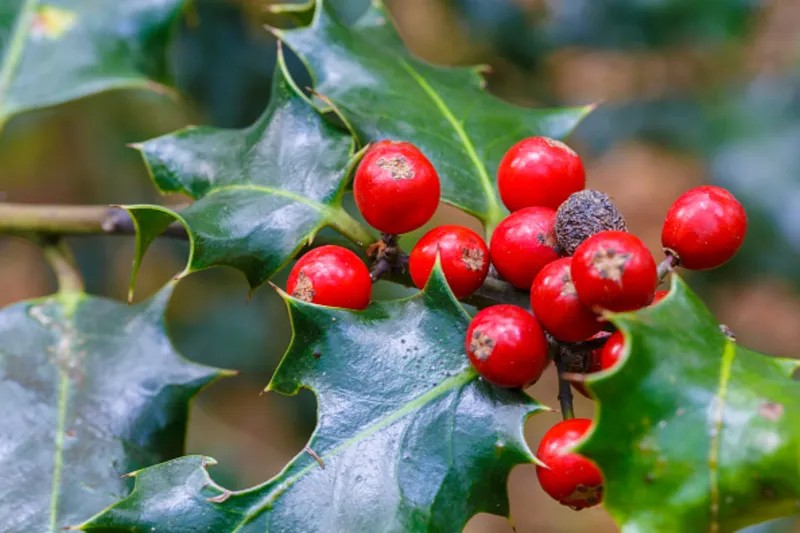
Getty Images
Holly berries can cause vomiting. Dogwood berries, while ingested by birds, are harmful to humans. Another berry called the cotoneaster berry can even cause seizures. Wild berries are not the same as those you buy at the store, so don’t eat them unless you know that they won’t harm you.
17. If You See Funnel Clouds Forming In The Sky, Go Indoors Immediately
What looks like a harmless cloud formation spinning in a waltz could become something more sinister and far more dangerous. If you see funnel clouds forming in the sky, go indoors immediately. It could be the harbinger of a tornado—a force of nature that brings destruction to all it touches.
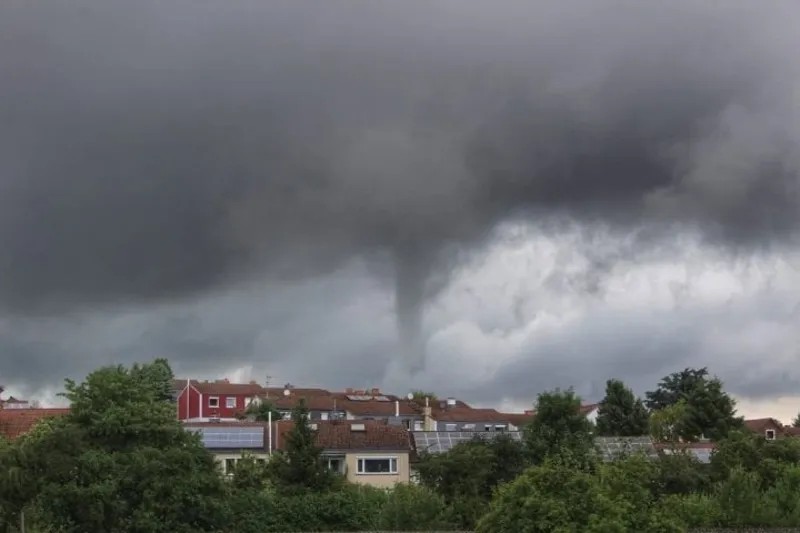
Tornadoes are a natural disaster that should never be taken lightly. According to National Geographic, if a funnel cloud doesn’t reach the ground, it will not form a tornado, but it’s still better to get indoors as soon as possible, just in case.
18. If You See A Wall Cloud, Be Ready To Take Action
While it might be nice to lay on the grass looking up at the sky, especially during a clear day, it’s still best to spend the rest of the afternoon inside the house if you see a wall cloud. When you see a large wall of cloud, there’s a chance that a thunderstorm is forming.

Getty Images
Wall clouds are rotating columns of air extending from the base of a thunderstorm up into the storm’s anvil. If you’re not sure how to identify one, look for clouds that sit lower than the rest. Some wall clouds have been known to form tornadoes. You don’t want to get caught outside when it touches down.
19. Scratched Trees And Five-Toed Paw Prints Indicate That A Bear Is Nearby
Bears are some of the most dangerous animals you can see in the wild. If you are hiking or camping in bear territory, you should always be on guard. Scratched trees and five-toed paw prints indicate that one is nearby. There aren’t many animals that leave five-toed paw prints, so it could only mean one thing.
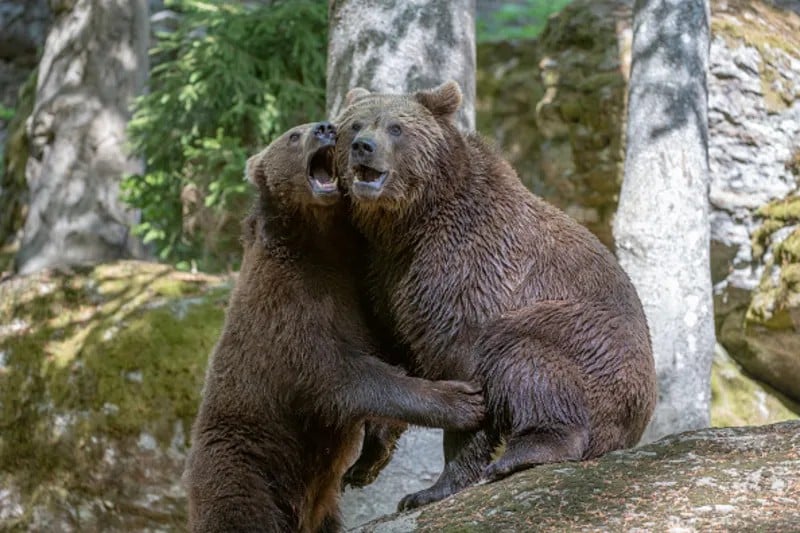
Getty Images
Bears can cause serious damage, and if you’re not careful, they can even kill you. Tufts of fur and their droppings are two more signs that a bear lives in an area. Take them very seriously. When you encounter a bear, it’s important to stay calm and avoid eye contact.
20. When You Hear Rushing Water, Run To Higher Ground
It’s important to know what to do when rain comes down in buckets and spades. Knowing how to identify a flash flood can really save your skin. You really don’t want to be caught by a flood of water.
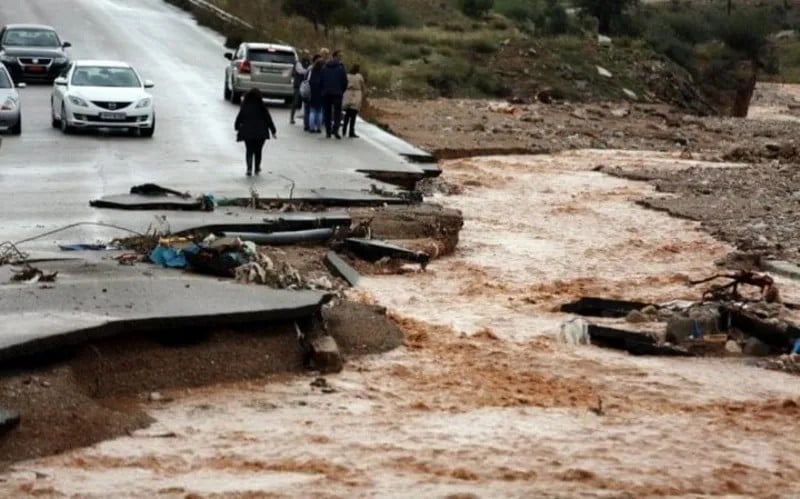
There’s a good chance you’re already aware of this safety tip. After all, it’s common knowledge. If you’re near a stream or a river that’s been filled by rainfall and you hear a loud sound of rushing water, head to high ground. You’re about to get wet.
21. Red Skies Signify Rain
A red sky at night isn’t always a sign of good weather. For non-maritime folk, it can be an indicator of clear skies ahead, but this isn’t accurate. For sailors, it’s a warning of bad weather to come. Red skies at night give an indication as to what might happen the following day.
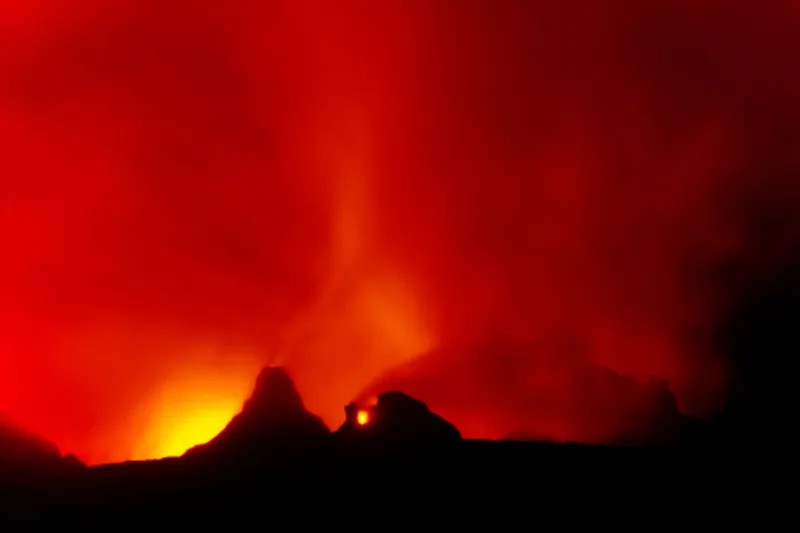
Getty Images
Scattering dust particles in the sky cause the sky to shine red. These particles scatter in all directions and disperse light into different colors, including a red hue similar to the one seen at sunset and sunrise.
22. When The Ocean Starts To Roar, Head For High Ground
The ocean is a sight to behold. However, sometimes it can also be a threat. Even the most beautiful views can become dangerous in the blink of an eye. When the ocean starts to roar extremely loudly, that’s when you know a tsunami is on its way.
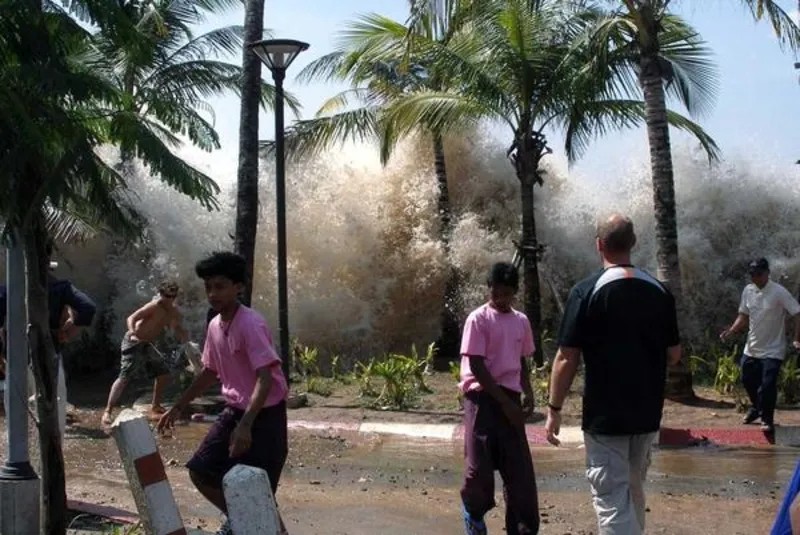
Even though tsunamis can’t be stopped, you can definitely prepare by running away. With the climate changing, who knows when you might see one of these devastating a city near you. Best to be prepared and know what to do should you be faced with one. Head for safety. It’s no good catching a wave if you’re going to lose your life.
23. When Wild Creatures Evacuate, An Earthquake Might Be On The Way
Is there any truth to the saying that animals can predict earthquakes? Living in the modern age, we only tend to trust what we can prove. And as far as rigorous scientific testing goes, there’s not much to support this claim.
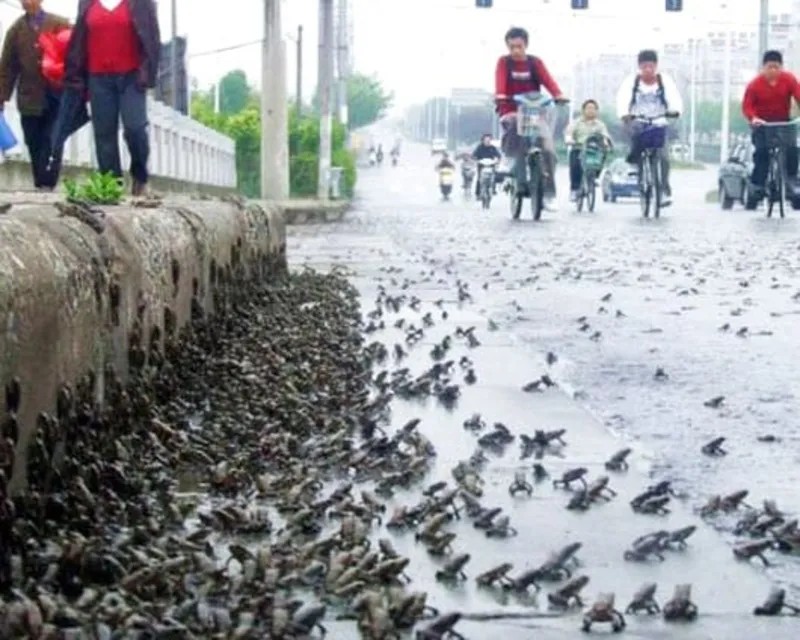
However, a few animals have been observed sensing an earthquake before it takes place—for example, small animals like rodents and insects. They feel the initial rumblings, the first and tiniest of vibrations, before an earthquake comes into full force, allowing the animals to get away.
24. If Your Hair Stands On Edge, Get Inside
It doesn’t matter if you’re into the idea of going outside and getting wet during a storm. While it may seem hard to believe, you are more likely to die from being struck by lightning than being attacked by a shark.
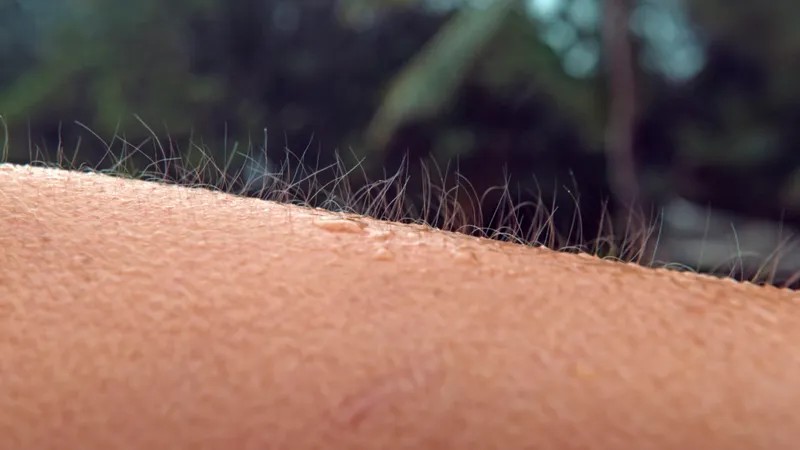
Shutterstock
When you see lightning strike, your body becomes charged. When this happens, any object near you, including the ground, becomes part of a dangerous, all-natural electrical circuit that can send a deadly shock through your body. The best way to avoid it is by getting as far away from the storm as possible.
25. When Sharks Begin Swimming Deeper, It Can Be A Sign That A Hurricane Is Headed To Shore
Hopefully, you’ll never be in a situation like this, but it’s good to know nonetheless. Sharks are smart and can sense when a dangerous situation is coming. When they swim deeper into the water, it’s because they feel the barometric pressure drop and other signs of an approaching storm.

Getty Images
Sharks are typically found in shallow water because they cannot swim deep down in the ocean. Sharks have a respiratory system that requires them to contact the surface to breathe. However, during hurricanes and other natural disasters, sharks venture into deeper water.
26. The Halo Around The Moon Or Sun Is A Sign Of Weather
Weather is something that we can’t control, but we can predict pretty accurately. Meteorologists rely on certain signs from nature to tell what the weather will be like in a few days and days ahead of time. How? Thin sheets of ice crystals or halo-like rings around the sun or moon.
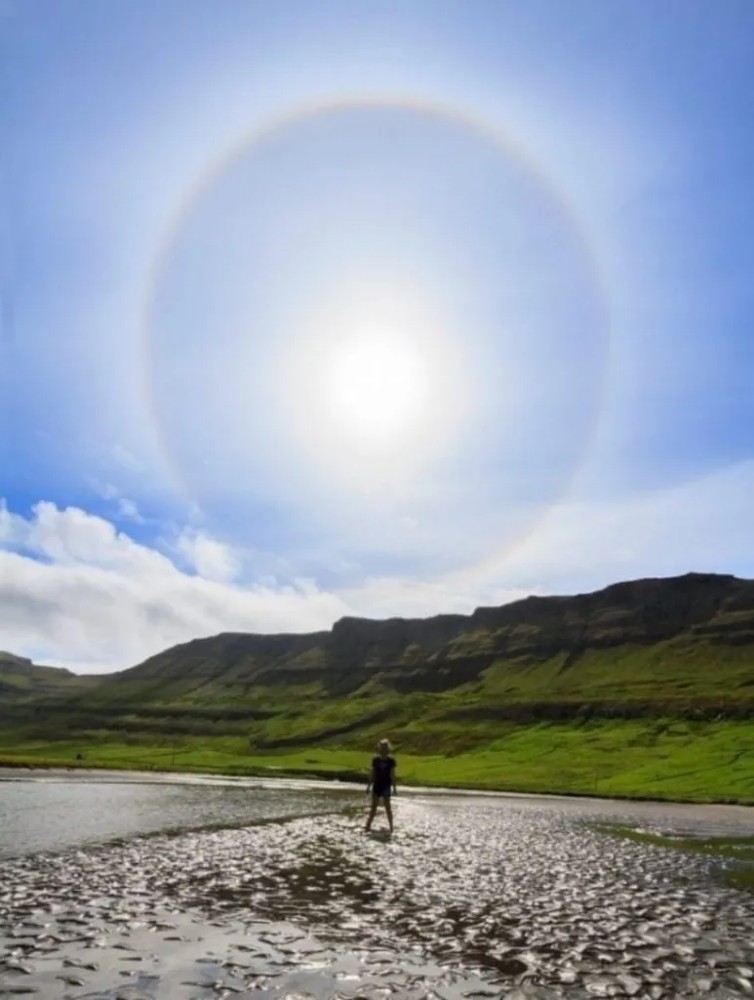
Halos mean that low pressure is moving in, which is a good sign of rain. This rain can either be immediate (as in, a storm is coming) or indicative of incoming rain in the next few days. Either way, make sure you have an umbrella ready.
27. Rising Water Levels Could Be An Indication That A Flood Is Coming
Flooding can cause a lot of damage, not just to your home but also to your body. As well as the physical impact, you may come in contact with water infused with hazardous materials or contaminants. Flooding can occur quickly or gradually, within a few minutes or within hours.
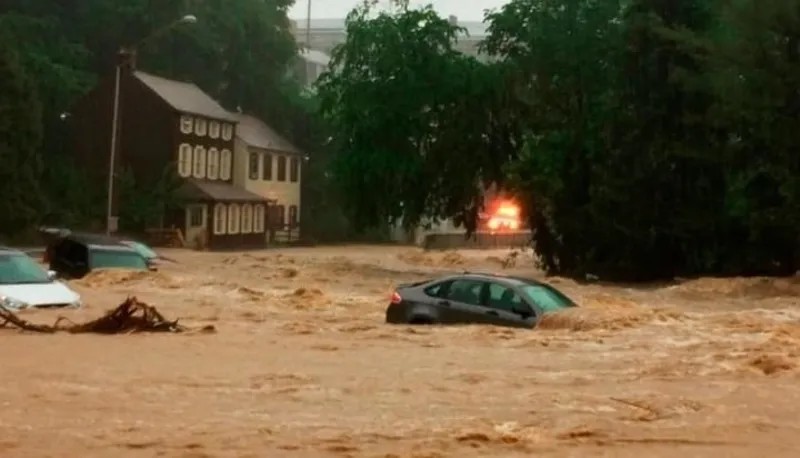
An increase in water levels is a sure sign that flooding will occur; it doesn’t matter what the level of the river or lake is now. Don’t ignore signs of rising water. Even if it isn’t raining now, it’s possible that heavy rain from elsewhere could have triggered a flood. It’s better to be safe than sorry!
28. Ecosystem Canaries Are Warning Us About Environmental Problems That Threaten Our Entire Ecosystem
Canaries in mines were once responsible for warning miners when carbon monoxide and methane gasses were beginning to build up. These canaries died before any danger came to the miners. If they saw a dead canary, it was time to leave the mine.
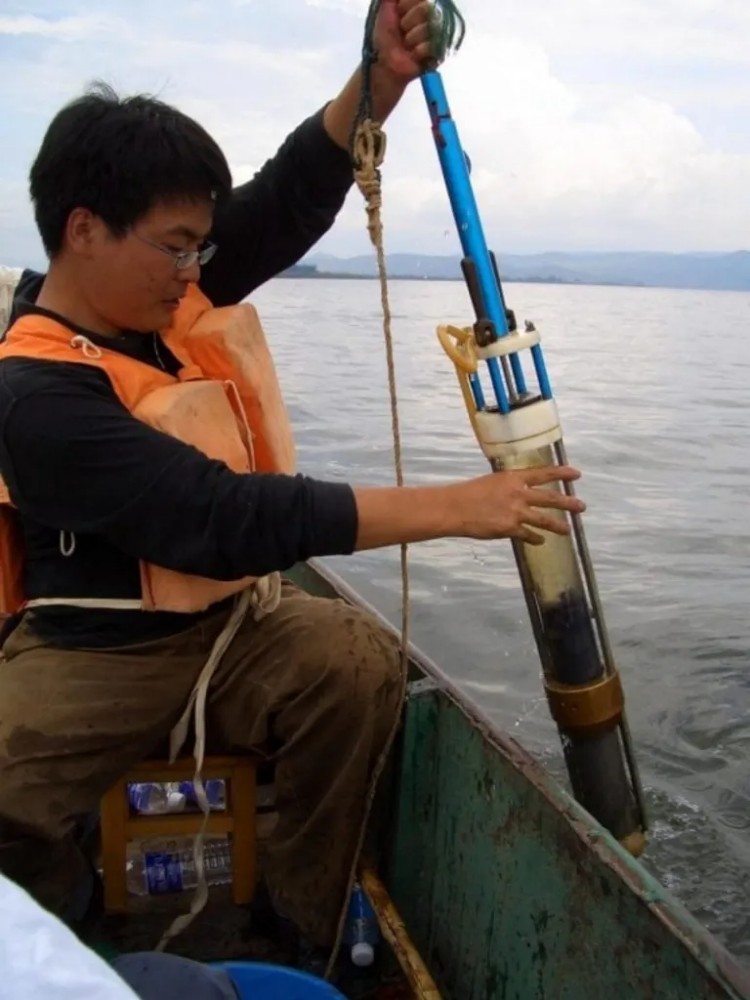
Today, scientists are using whole species of animals as “ecosystem canaries” to warn us of imminent catastrophe. So far, thousands of species of animals have died off due to changing climates—the vast majority of scientists (97%) agree that human industrial activity is to blame. Unless we do something to change course, the human species will soon be as dead as the mine canaries of old.
29. Glossy Pavement Can Mean Danger
Have you ever gotten up in the morning, left for work or school, and found everything covered in ice? If you used to think, “Great, I can send myself sweeping forward,” you thought wrong. Black ice is dangerous, but it isn’t really black. It’s actually clear.
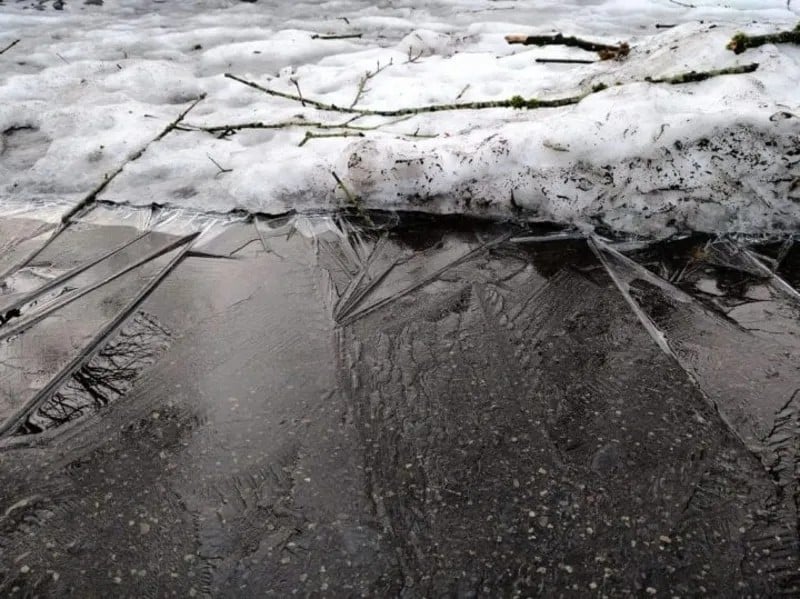
The best way to spot black ice is to look for clear signs on the ground – shiny patches indicate ice beneath. Also, look for water droplets frozen solid on your car or telephone pole as these are also signs of black ice forming. You don’t want to slip and hurt yourself when you’re out walking in this cold weather, so take caution – wear appropriate shoes and dress warmly according to weather conditions.
30. Rattlesnakes Will Give You A Warning Before They Strike
If you’re from the Southwestern United States, you might have heard rattlesnakes rattling before. This sound is used to warn people and animals away when the snake feels threatened. Basically, if these creatures start buzzing, then it’s best to run in the opposite direction.
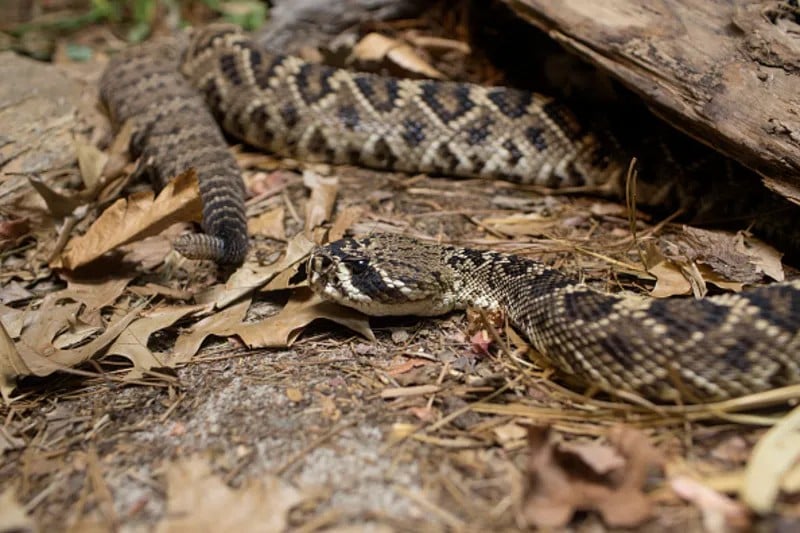
Getty Images
When a rattlesnake is angry or threatened, it’s not unusual for them to strike out. It goes without saying that being bitten by a rattlesnake is something that you definitely want to avoid if you can help it.
31. Evidence Of Climate Change Can Be Seen In The Migration Patterns Of Many Animals
The world has been changing over the past century. The climate is getting warmer and beginning to disrupt ecosystems across the planet. Animals are beginning to leave their normal habitats in search of more sustainable pastures. While some of them will survive at least in the short term, many of them will not.

This is a very important sign of climate change, and it helps show what could happen to humans if unchecked climate change continues. Just 100 companies are responsible for 71% of carbon emissions worldwide. Since we only have one planet, maybe we should ask them to help take better care of it—if not for the planet—then for our own sake.
32. Never Eat A Mushroom Growing Near A Tree
Mushrooms can be beautiful when they grow among the roots of a tree. But many mushrooms are deadly. The deadliest mushrooms belong to the Amanita genus. These look delicious—but don’t try eating them! One bite of the “destroying angel” or “death cap” will lead to severe muscle spasms, vomiting, and stomach cramps.
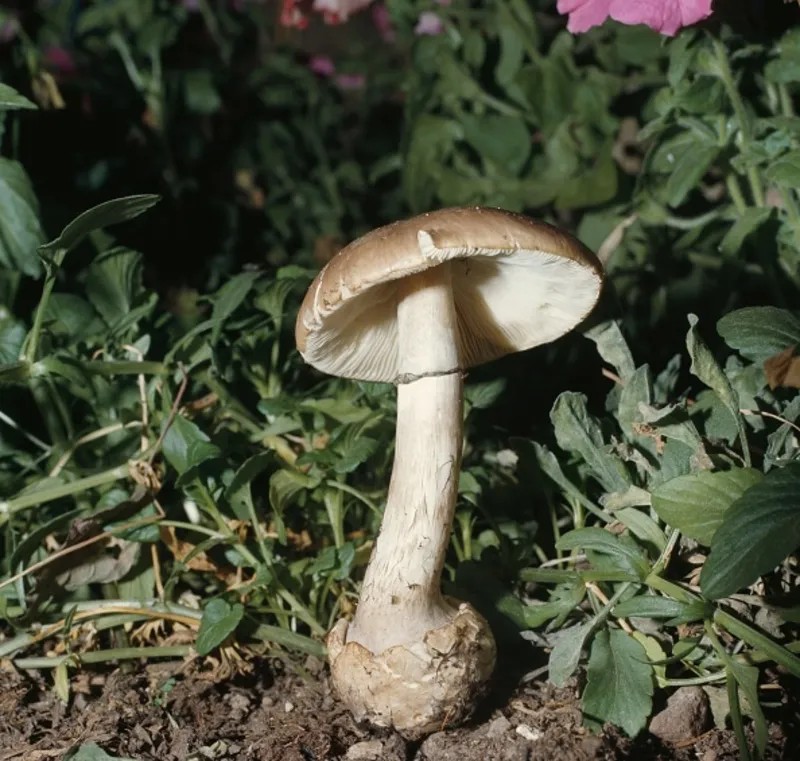
Getty Images
Most Amanitas are easy to identify with their bright colors and distinct shape. But other species have a similar color and cap, making them difficult to distinguish from an edible mushroom. However, these types of mushrooms grow near a tree, so keep that in mind.
33. Avoid Lakes Located Near Volcanoes Or In Warm Environments
Lakes that have consistently hot temperatures year-round and that are located near volcanoes or in warm environments might actually be ticking time bombs due to the amount of pressure these lakes contain deep, deep down. Some of them might even go off.
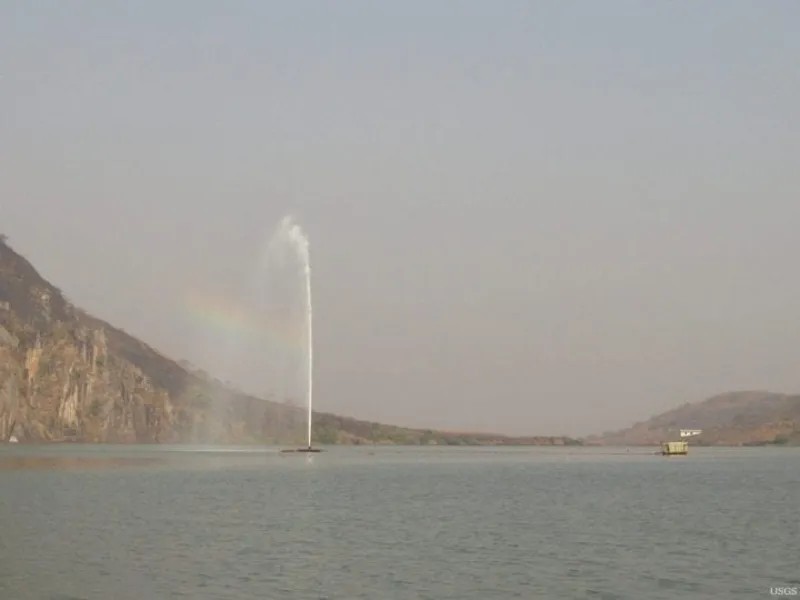
It is unclear as to when and why these lakes explode, but the most likely explanation for the explosion is suffocation due to CO2 deposits in the lake’s sediment. After this, a burst of hot water results in a boiling effect. Lakes near volcanoes or in warm environments are especially prone to going off.
34. Stay Out Of The Water When Waves Are Choppy
Whether you’re at the beach or some other body of water, a rip current is something that can drag you down to your demise. It’s best to know how to spot these dangerous water channels and how not to get caught by them.
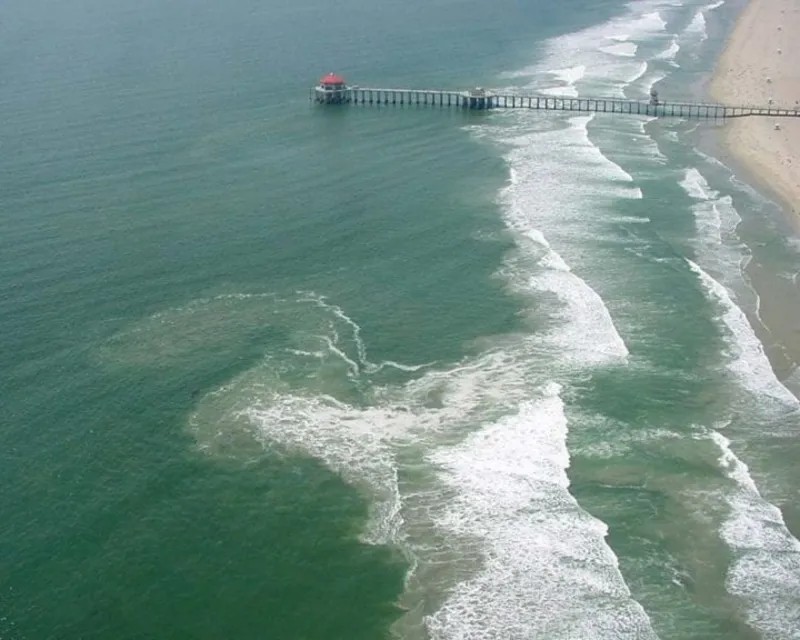
If you’ve been to the beach before, you might have seen discolored water or gaps in the waves. If you see it, it’s best to swim parallel to the shore rather than going with the flow. This way, you’ll break out of the rip currents and swim at an angle until you reach the shore.
35. Always Get Off The Road If You See A Giant Cloud Of Dust
When driving in the southwestern states, getting caught in a sand storm can be truly terrifying. Sand storms that come out of nowhere can blind you, putting you at risk of a deadly crash.

Getty Images
If you’re on a busy desert highway and see a giant cloud of dust coming from multiple directions, this is your cue to get off the road as quickly as possible. If you have to move, move slowly, and keep your lights on and honk your horn to let other drivers know you’re around.
36. Frogs Can Give Us Clues About The Weather
Frogs can be great rain callers. They don’t actually call the rain, but hearing its croak might mean that you’re about to see some. If a storm is brewing and the barometric pressure falls, a frog will start to croak more frequently.
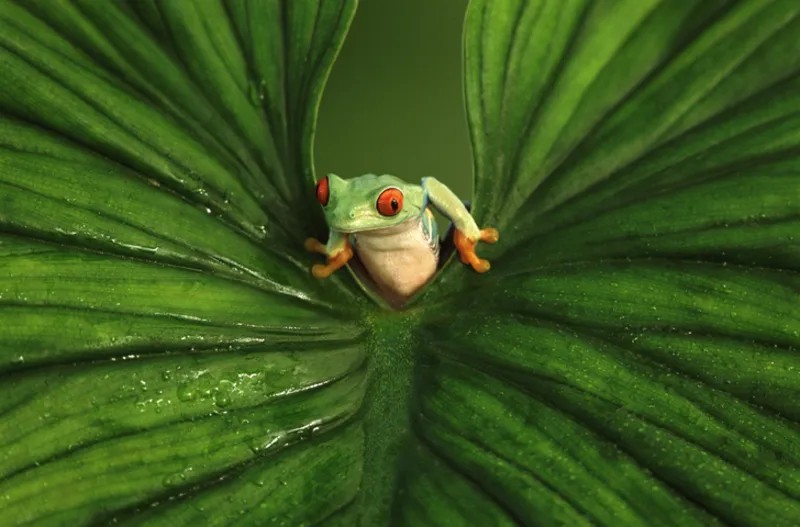
Getty Images
Frogs might not be the most attractive creatures on Earth, but their croak is certainly used to attract mates. Frog romance is best held under raindrops as they lay eggs in water. Wet weather is also perfect for their babies, once born.
37. When The Golden-Winged Warblers Disappear, A Storm Is Coming
Animals are capable of detecting impending natural disasters long before they happen. The golden-winged warbler, a small bird native to North America, is known for fleeing the area before an earthquake or tornado.

Further research is still needed, but researchers believe that these amazing birds are able to pick up low-frequency sounds that come from storms, even if they’re currently miles away. It’s amazing what we can learn from nature.
38. If You See A Patch Of J-Shaped Trees, Be Ready For A Potential Landslide
Have you ever seen a patch of trees in a “J” shape while hiking in the woods? If you’re an outdoor lover and have hiked more times than you can count on two hands, then you probably have. But here’s something you might want to know. A J-shaped group of trees isn’t just pretty. It’s a sign that something is afoot.
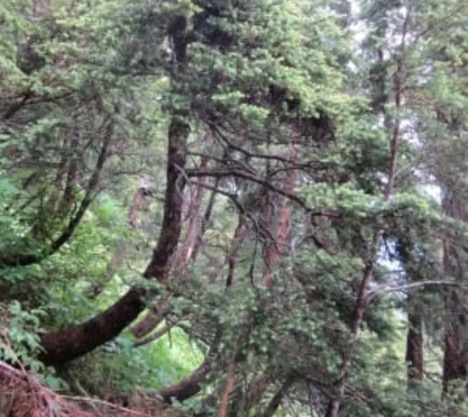
When trees start bending into the shape of a “J” from their roots up, this means that something has disrupted the soil on which they grow. Trees are the first things to move during a landslide. It’s a good warning sign for humans and animals alike to avoid passing through areas where landslides occur.
39. When The Ocean Level Drops, A Very Dangerous Event Is Likely To Occur
Whenever you hear the word “tsunami,” you might think about the waves which hit Japan, causing immense devastation. But tsunami activity isn’t confined to that region of the world. Here’s a hint if you see the ocean recede so fast that even the fish can’t return to the water: run.
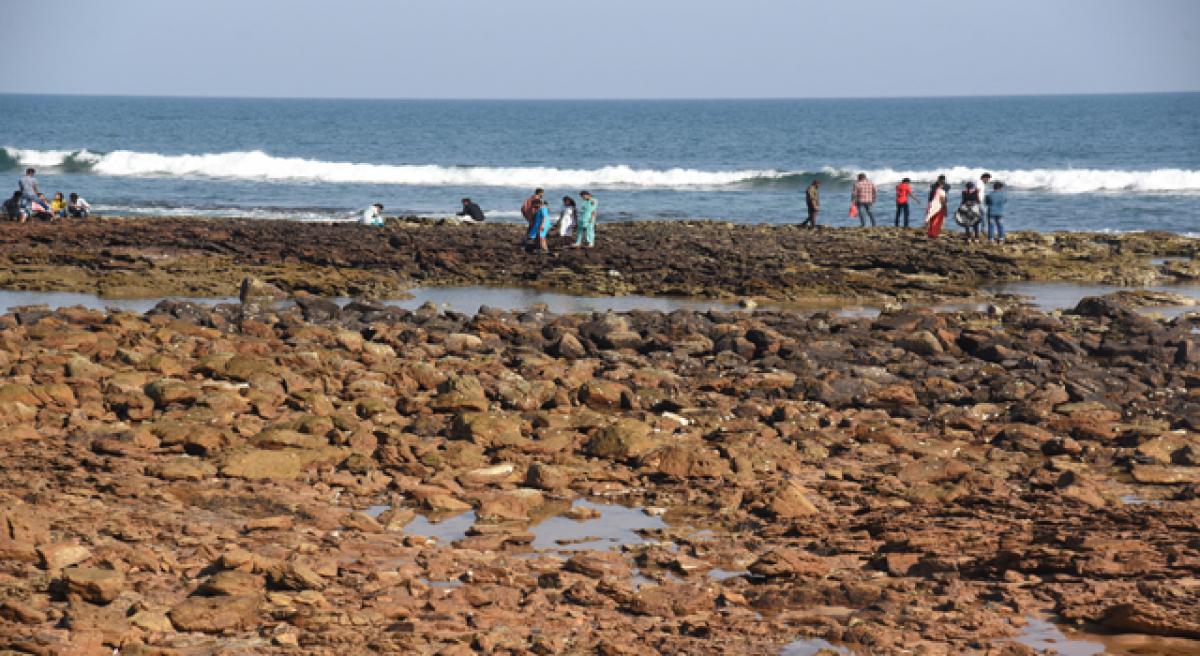
Tsunamis occur when an earthquake occurs deep in the earth below the sea. This displaces the water above. When this incredible force hits the shore, it can do incredible damage. When seawater levels drop more than six feet (2 meters) on average, it is an indication of a tsunami.
40. Signs That A Bull Is Ready To Charge
People tend to forget how dangerous these animals can be. Bulls make snorting sounds, scrape the ground, and rear their hind legs before charging. Unless you’ve been seriously hitting the gym, you probably won’t stand a chance against these monsters. But if you see any of these signs, get behind a tree or otherwise put up some kind of barrier.
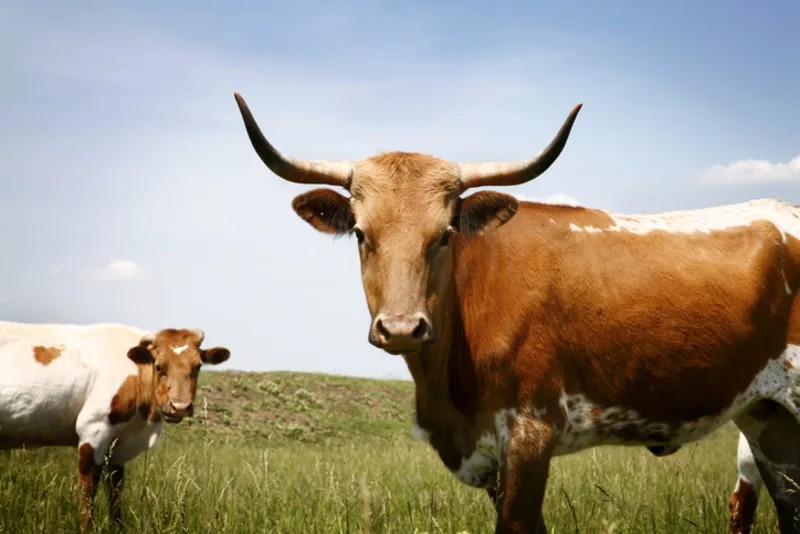
Getty Images
If ever you find yourself in the way of an angry bull, you should walk backward until you’re at least 20 feet apart. In this case, the bull will probably lose interest in you so long as you don’t get any closer again.
